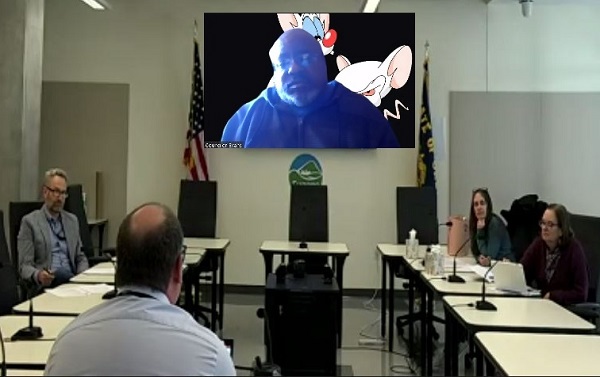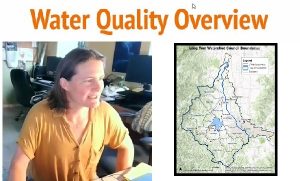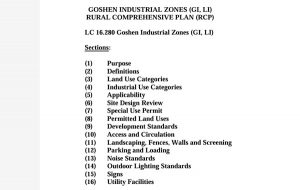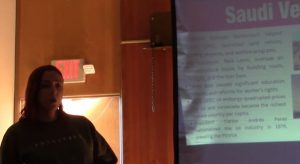City looks to build infrastructure for housing, industry
7 min read
The city aligns its lobbying efforts and its capital budget to prepare for new industry and housing.
[00:00:05] Jay Runte (City of Eugene IGR): Hi folks. My name is Jay Runte. I am the American Rescue Plan Act manager, serving out of the city manager’s office supervised by Ethan (Nelson).
[00:00:15] John Q: At the intergovernmental relations committee on Feb. 1, Jay Runte.
[00:00:20] Jay Runte (City of Eugene IGR): The Inflation Reduction Act will invest approximately $300 billion in deficit reduction and $396 billion in energy security and climate programs over the next 10 years.
[00:00:33] The act will open up funding opportunities for greenhouse gas reduction, environmental and climate justice, urban forestry, and clean heavy-duty vehicles that may likely address the organization’s community climate recovery goals.
[00:00:51] Councilor Greg Evans: Let me ask you a question about this particular pot of money. Does that go into, also, to help leverage private investment? And specifically I’m talking around the manufacture of solar panels and other alternative forms of energy.
[00:01:10] Jay Runte (City of Eugene IGR): Wonderful question, and thank you. My understanding is that there are tax subsidies for both public and private organizations, that they may utilize to, I think, encourage local governments to engage with solar companies and EV companies.
[00:01:32] And given that this will extend in over a decade of time and funding, I think there’s a lot of opportunity to kind of address many of these goals that council has set out for us in regards to the climate justice.
[00:01:48] Councilor Greg Evans: So that would include the clean electricity tax credits, clean fuels—
[00:01:53] Jay Runte (City of Eugene IGR): Yes, sir.
[00:01:56] Ethan Nelson (City of Eugene IGR): Greg, I can send you a document that’s from the Bluegreen Coalition that really outlines all of the manufacturing tax credits and opportunities for investment, and I can send that to you. That should helpfully give folks that you’re working with some guidance that they could take a look at.
[00:02:12] Councilor Greg Evans: That would be perfect, Ethan, ‘cause there’s some talks going on now about how to best leverage those tax credits, so that we can get some manufacturing going here in Eugene. How much of that $300 billion would we be able to access, or is that a competitive process?
[00:02:29] Ethan Nelson (City of Eugene IGR): Yeah, I think that it’s a mixture of competitive, but there’s a lot of it wrapped up in tax credits, and so it’s really what the private sector’s going to move on.
[00:02:38] I was in a meeting earlier today, and one of the things that came up is that, you know, whenever there’s an allocation at the federal level, you can always give an estimate that just over 1% could come to the state of Oregon based upon population, if you’re just going by population.
[00:02:54] Councilor Greg Evans: Right.
[00:02:55] John Q: At the budget committee Feb. 15, City Engineer Jenifer Willer.
[00:03:00] City Engineer Jenifer Willer: I’m Jenifer Willer. I’m the city engineer and I am the Public Works Engineering division manager… One of the new plans to our CIP and specifically in the wastewater service area is the housing implementation pipeline. And it specifically had an action item in it to include a wastewater project to support housing needs. And so we do have that included in this CIP.
[00:03:28] (Public Works) Engineering worked with Planning and Community Development to look at a variety of projects that are in the wastewater master plan as potential extensions and did an analysis comparing whether the area has interest or is ripe for development based on what Planning and Community Development have heard between builders and developers, as well as how many housing units can we get for the amount of money that we’re spending.
[00:04:01] And this project, the West 11th and Crow Road wastewater extension project, came out at the top, as far as having a potential for over 1,200 housing units, over 500 commercial jobs, and over 350 industrial jobs, for the about $2 million project that’s in the CIP.
[00:04:23] John Q: A question from Budget Committee Member Ryan Moore.
[00:04:26] Ryan Moore (Budget Committee member): I did have a question about specifically West 11th and Crow Road and it’s maybe a larger question too. It was mentioned that it should support 1,200 units of housing. I just was hoping to get more detail on what kinds of housing. Are we only planning for single detached housing or multi-family, what’s that look like?
[00:04:49] City Engineer Jenifer Willer: Those are numbers that Planning gave to me based on the projected land use and zoning for that area. And I think the Envision Eugene process identified what the future zoning of, and if I remember correctly, I think that is an R-2 zoning for that area, along with some commercial and industrial kind of closer to West 11th area.
[00:05:13] John Q: At the budget committee Feb. 15, public comment from John Barofsky.
[00:05:18] John Barofsky: My name is John Barofsky and I reside in Ward 3. I would like to thank you all for your work in helping staff develop this capital improvement program. I believe this is a well-developed CIP and it should get moved forward to the city council for adoption.
[00:05:36] But one area that I think is lacking and might want to go into the next iteration of the capital improvement program is economic development. I know the mayor brought this up at her ‘State of the City’ as a goal moving forward, and I think that that would be a good criteria to add to the qualifying criteria for the CIP.
[00:06:01] I’m just going to give you an example of where I think it could be used. Recently the city expanded its urban growth boundary by several hundred acres for employment. This is out the Clear Lake Road area. Yet it is not being served right now by infrastructure, either stormwater, wastewater, or those types of things.
[00:06:21] There’s a lot of communities out there that are looking to bring in jobs to their communities, and one of the things that they look for is buildable land and access to infrastructure. So I think that economic development, as one of the criteria that we look to, is something that should be thought of going forward.
[00:06:44] And I’ll give you another example. One of the criteria that is looked at and policy that is looked at when developing the CIP is the housing implementation pipeline. I believe that is a template for what we could use for economic development—not for this CIP, but maybe future CIPs.
[00:07:02] John Q: Later in the meeting, City Manager Sarah Medary.
[00:07:05] City Manager Sarah Medary: I could just comment on that. I actually thought that was an interesting idea of just what’s in the criteria. So, I want to circle back with our team and just talk about that a little bit.
[00:07:14] I also wanted to take the opportunity to let this group know that the expansion of infrastructure to the Clear Lake area is actually one of the council’s legislative priorities for this session, recognizing exactly what John (Barofsky) was saying, that we have a lot of economic land that’s intended for jobs that’s not served, just like we do with the Clear Lake that you saw for housing. So that’s actually something we’re working on actively. But the idea of including that in criteria was intriguing to me, to be more explicit about it.
[00:07:46] John Q: Unhoused response and housing are the city’s top priorities at the legislature this session. At the IGR meeting Feb. 1, Ethan Nelson.
[00:07:55] Ethan Nelson (City of Eugene IGR): The council approved and directed priorities of long-term funding for unhoused emergency response… Look, we have 170,000 people and anywhere from (3,000) to 6,000 (homeless), depending upon how you look at it. That’s a pretty big per capita number.
[00:08:12] Councilor Evans, I know that you’re involved with LOC (League of Oregon Cities), but we could be getting to a position pretty quickly where the City of Eugene and LOC’s outcomes and approaches part ways. I don’t want to get there. I’m having lots of conversations—
[00:08:26] Councilor Greg Evans: Ethan, I fully understand that, the need in Eugene and Salem and the Portland metro area. I’m not going to fight you on that one, I totally agree with you on that. You know, the money needs to go where it needs to go.
[00:08:37] Ethan Nelson (City of Eugene IGR): Number two, seeking funding for priority projects, including Clear Lake Road infrastructure, Crow Road infrastructure.
[00:08:44] We know our delegation really wants to see an industrial lands readiness investment, and so we’re positioning this project as that, an investment in wastewater infrastructure, which is what the phase one is out in Clear Lake. It’s already within our UGB and it’s sited for industrial lands.
[00:09:02] There’s a similar dynamic with Crow Road infrastructure. As you’ve probably heard, the legislature and Gov. Kotek are focused in on housing production. The governor put out a 36,000 units-per-year goal. To get there is going to require a whole lot of effort and one of those is to get lands ready.
[00:09:22] And so we’ve put forward the Crow Road area for residential development and being able to get a kickstart of that area with some state funds to invest in infrastructure.
[00:09:33] Out of the eight sessions that I’ve been doing this work, this is the one where our big-ticket issues are also the legislature’s big-ticket issues, for the first time in a long time.
[00:09:44] John Q: The City of Eugene looks to prepare Clear Lake for industry and Crow Road for housing.






